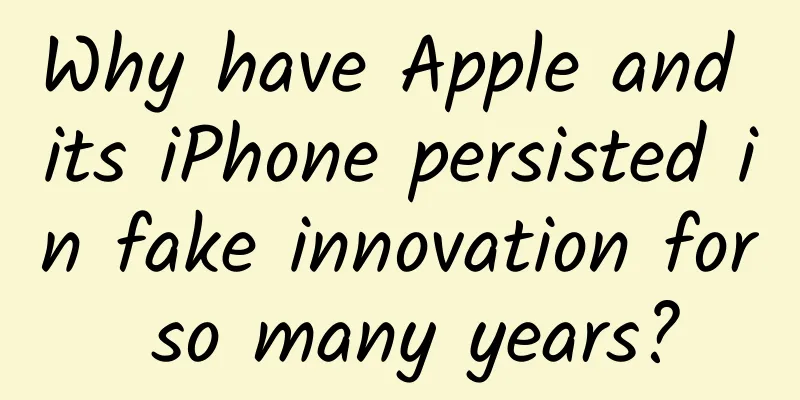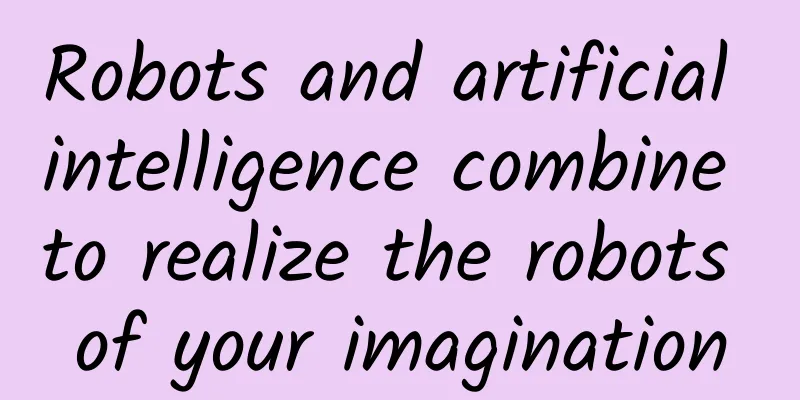Why have Apple and its iPhone persisted in fake innovation for so many years?

|
Apple's autumn new product launch conference was held as scheduled. This industry event, known as the "Technology Spring Festival Gala", is becoming more and more worthy of its name, and is rapidly turning into the direction of the Spring Festival Gala. "Awkward", "bland", "boring" and "politically correct" are replacing the "cries" that once issued for product and technological innovation. I have no intention of repeating here the "far behind" updates and increasingly sophisticated business techniques of the Apple Watch S9 and iPhone 15 series. Because as Guo Degang said, when someone tells rocket experts that anthracite should be used for space flight, the aerospace experts will lose if they even look at him for a second. In 2023, in front of mobile phone manufacturers who are talking about innovations such as USB2.0 Type-C interface, custom buttons and 48MP pixel lens modules, any attempt to discuss new products seems too redundant and powerless. On the contrary, it is considered more valuable to explore another issue. Apple is one of the most valuable brands in the world, and is even hailed as the white jade pillar that single-handedly supports the bubble-ridden U.S. stock market. It was once famous for its innovative products and services, and has launched many revolutionary and influential products such as Macintosh, iPod, iPhone, iPad, etc., which not only changed people's lifestyles, but also changed the landscape of industries such as computers, music, communications, and entertainment. However, in recent years, Apple's products do not seem to bring much surprise and freshness to users. They only make minor adjustments and optimizations in details, without entering new fields and technologies. Why did Apple fall to this point, and use a press conference lasting nearly two hours to "pretend" that it is still innovating? Has Apple lost its innovative gene? Why does Apple pretend to be innovative? This article will try to analyze this issue from the perspective of internal and external reasons of Apple. Jobs died, and Apple's innovative genes also disappearedApple's founder and leader, Steve Jobs, who died in 2011, was the soul of Apple and the driving force of its innovation. Jobs is known as "the greatest entrepreneur in the world", "the most visionary leader in the technology industry", "the most legendary figure in Silicon Valley", etc. He has extraordinary creativity, insight, charm and decisiveness. He has extremely high standards and tastes for products. He dares to challenge tradition and authority. He is good at discovering users' potential needs and desires. He can lead the market and trends. He can create amazing and fascinating products and services. He is crazy enough to believe that he can change the world, and he has done it many times. During his time at Apple, Jobs launched many revolutionary and influential products, such as Macintosh, iPod, iPhone, iPad, etc. He also established a unique organizational culture at Apple that emphasizes values such as innovation, excellence, simplicity, and collaboration. Looking back 12 years after Jobs' death, his departure had a greater impact on Apple than people expected. His departure took away Apple's innovative genes from top to bottom. Apple's current CEO Tim Cook is an excellent operator, but is generally considered by the outside world to lack the vision and courage to innovate. After Cook succeeded Jobs as Apple CEO in 2011, he did not forcibly "imitate" Jobs' style in accordance with Jobs' last wishes. Instead, he took his own management path and built Apple into a more stable and efficient company, achieving sustained growth in various indicators such as market value, profits, and sales, making it one of the most valuable companies in the world. However, Cook's leadership style has also been criticized as being too conservative and pragmatic, lacking the drive and courage to innovate and change. Cook is more focused on profits and market value rather than products and services. He has not put forward a clear and visionary strategic direction, nor has he launched exciting and anticipated new products or services, showing the appeal of leading the market and trends. The new products Cook launched during his time at Apple, such as Apple Watch, AirPods, and HomePod, did not reach the level of innovation and influence of the Jobs era, nor did they bring much surprise and freshness to users. Cook also established a more conservative and closed organizational culture at Apple, unwilling to accept external advice and challenges, and no longer taking risks and trying new fields and technologies. In a nutshell, Cook is a qualified general who maintains the status quo, but is completely isolated from the pioneers who are keen on innovation. The Apple Watch has been released for nearly ten years, and there has been almost no change in appearance, battery life, etc.; the iPhone 15 series released in 2023 can regard Type-C interface, custom buttons and 48MP pixel lens module as innovations, which indirectly reflects this conservatism. Cook's conservatism also led to Apple's insufficient investment in research and development. Apple does not have enough resources and willingness to explore new technologies and markets, and lags behind other companies in artificial intelligence, cloud computing, blockchain, etc. Although Apple is one of the most valuable companies in the world, its investment in research and development is relatively low. Data from 2020 shows that Apple spent $18.7 billion on research and development, accounting for 6.3% of its total revenue. During the same period, Google spent $27.5 billion on research and development, accounting for 15.9% of its total revenue; Microsoft spent $19.2 billion on research and development, accounting for 13.4% of its total revenue; and Amazon spent $42.7 billion on research and development, accounting for 12.4% of its total revenue. Even Huawei, whose revenue has dropped significantly in recent years due to force majeure, has surpassed Apple in terms of absolute value and proportion of R&D investment. In 2021, Huawei's R&D investment was 125.7 billion yuan, exceeding Apple's 110 billion yuan in the same year. According to Ren Zhengfei, Huawei invests at least 10% of its revenue in scientific research every year. These data show that Apple's investment in research and development is far lower than that of other technology giants, reflecting that Apple does not attach enough importance to innovation. Apple's shortcomings in research and development have also caused it to lag behind other companies in some emerging technology fields. For example, in terms of artificial intelligence, although Apple has products such as Siri, they are not as good as Google Assistant, Amazon Alexa and other products in terms of functions, performance, and intelligence. This year, they were even beaten by ChatGPT. These examples show that Apple lacks innovation and competitiveness in some emerging technology fields and may have missed some important opportunities and markets. In addition, Cook's conservatism is also reflected in the diversification and redundancy of Apple's product lines. Apple under Cook's leadership is no longer willing to make drastic changes like Jobs did in the era of Steve Jobs, and decisively cut off the involutionary competition between major product lines, resulting in Apple products having no clear core competitiveness and characteristics. Jobs once said, “People think innovation is about adding new features or elements, but innovation is about taking away the extra stuff.” During his time at Apple, Jobs made some bold and decisive decisions, such as removing the floppy drive from the Macintosh, and removing the buttons, screen and even data port from the iPod. These decisions were made in order to make the products simpler and easier to use, and to make the products more competitive and distinctive. However, innovation in the Cook era lacks the firmness and decisiveness of the past, and also lacks insight into users' real needs. Innovations such as minor repairs are often not accepted by users. For example, the 3D touch function brought by the iPhone 6s series brought a new dimension to the interaction of smartphones. However, it soon died because Apple did not make firm efforts in function development and user education. It was removed after the iPhone XR and survived for only three and a half generations (it was retained in the iPhone XS and XR in the same year). The iPhone 7 series began to cancel the 3.5mm headphone jack, which indeed promoted the process of wireless mobile phones. The AirPods series lived up to Apple's expectations and became the most successful new product in the Cook era. However, the discussion about the necessity of Apple to cancel the headphone jack has never stopped. Jobs also made drastic changes to Apple's product line, making resolute plans based on accurate expectations of technological development. The most typical example was that after launching the iPhone, he gradually cut off the iPod product line, which was at its peak at the time. But what we see now is that the iPad and Macbook product lines are sticking together, using the same chips and with extremely similar positioning. Macbook can run iOS programs, but it has the traditional form factor of a notebook; iPadOS also has a Magic Keyboard that allows it to be in the form of a notebook, and even has the same front-end scheduling as MacOS, but the poor system scheduling and file management make "your next computer still have to be a computer." In fact, there is obviously an optimal solution for the competition between Macbook and iPad, which is the desktop-level system of macOS, combined with the flexible and changeable hardware form of iPad, which can simultaneously meet the user's "productivity" and "iQiyi" needs. After the emergence of the M series chip, all obstacles to this product have been cleared. Now, the only thing that hinders the birth of this perfect innovative product is probably Apple's concerns about cutting product lines and damaging profits. Just imagine, if Jobs had taken the profitability of the iPod product line into consideration and cut off the multimedia functions of the iPhone, then it would have been an unknown whether there would be an Apple phone that would change the world in the future. Jobs' pursuit of simplicity is also reflected in product planning. There is only one iPhone and one iPad every year, but both represent Apple's strongest technology and the highest level in the industry. Consumers only have to consider subtle differences in color and capacity. This easily pleases consumers who have suffered a lot from Nokia and HTC's complicated product models and precise business methods. Today, Apple launches at least four iPhone models every year, using different chips, screens, batteries, and lens modules. This year's 15 series even has different USB interface specifications; the iPad has basic models, mini models, Air series, Pro series, etc. Not only do different products have different appearance ID, chips, interfaces, screen materials, screen refresh rates, lens modules, and biometrics, there is even a confusing combination like the 2023 iPad using the first-generation Apple Pencil, and the two are not even compatible with each other in terms of charging methods. For Apple's software engineers, the workload is daunting enough just to provide software support services for more than five years for complex hardware products, not to mention innovation in functions. Apple's scattered and duplicated resources also lead to Apple's products having no clear core competitiveness and characteristics. The rise of rivals and political correctness curb Apple's innovationWhile Apple's innovation is lagging due to internal reasons, its competitors are rising rapidly, which makes Apple face strong challenges and pressure in various fields and affects Apple's pace of innovation. In the first few years after the iPhone was launched, Apple was "a decade ahead of the industry" with its comprehensive innovation. While competitors such as HTC, Samsung, Nokia, and Motorola were slowly catching up in terms of system fluency, functional perfection, touch sensitivity, software optimization, hardware design, etc., Apple was steadily making a lot of innovation and progress every year. Multi-touch, app store, biometrics, voice assistant, etc., each new technology is epoch-making and trend-setting. But today in the smartphone market, Apple faces strong competitors from companies such as Samsung, Huawei, and Xiaomi. These companies are constantly innovating and improving, not only narrowing the gap with Apple, but also providing users with more choices and experiences. For example, in terms of screens, Samsung has launched technologies such as curved screens and folding screens. In terms of cameras, Huawei has launched Leica collaborations, super zoom and other technologies. In terms of prices, Xiaomi has launched products with extremely high cost performance. These technologies and products have brought users advantages and appeals different from Apple, which has weakened Apple's leading position and influence in the smartphone market to a certain extent. This has led to Apple now having to catch up with these competitors in addition to technological innovation, further weakening Apple's investment in R&D and technological innovation. The iPhone 15 series is a good example. It has finally caught up with Android models from many years ago in terms of charging port, lens sensor pixels, and periscope optical module. Another reason for this phenomenon is that the product form of smartphones has actually reached the end of its life cycle. When the road ahead was vast, Apple could run as fast as it could, leaving its competitors behind. But now, a high wall called the "smartphone life cycle" has appeared in front of it, and Apple has no choice but to fight hand-to-hand with its competitors under the wall. Smartphones are a mature product form that has reached a state of technological and market saturation, making it difficult to achieve qualitative leaps and breakthroughs. The functions and performance of smartphones are already powerful and complete enough, making it difficult to significantly improve and optimize them. The design and appearance of smartphones have become homogenized and standardized, making it difficult to have obvious differentiation and characteristics. The demand and market for smartphones have become stable and saturated, making it difficult to achieve significant growth and expansion. Smartphones, Apple's most important product and source of revenue, have reached the end of their life cycle and are no longer able to bring innovation and growth. Apple needs to find new product forms and markets to continue to maintain its innovative advantages and leadership. This is also the reason why Apple launched the Apple Vision Pro - switching the track to spatial computing and creating a new "iPhone". The huge investment of resources in new products may also be one of the reasons why the iPhone has been exhausted of innovation in recent years. The biggest change in Apple's iPhone 15 series this year is the powerful A17 Pro Bionic chip, which also lays the hardware foundation for Apple Vision Pro and spatial computing. Another external factor that is likely to have affected Apple's innovation is the accelerating process of Apple's supply chain transfer. As a multinational technology company, Apple has been subject to intervention and influence from various governments. Most of Apple's products are manufactured in China, which has affected Apple's trade war with China and forced it to compromise on supply chain transfers. In order to reduce industrial risks, Apple has to transfer some production lines to other countries, such as India, Vietnam, Thailand, etc. This will not only affect Apple's product quality and delivery speed, but also affect Apple's innovation. Apple's innovation relies heavily on its technical collaboration with upstream and downstream industries. Apple needs to work with its suppliers and partners to develop and launch new technologies and elements, such as OLED panels and production processes. Apple has a complete and mature industrial chain in China, which can achieve efficient and high-quality technical collaboration. However, Apple's industrial chain in countries such as India and Vietnam is not yet perfect and stable, which will inevitably affect the technological collaboration between Apple and its suppliers and partners, resulting in restrictions or delays in Apple's innovation in some new technology fields. Therefore, in the process of supply chain transfer, Apple has to slow down its pace of innovation to accommodate the current situation where the industrial chains in countries such as India and Vietnam are not yet sufficient to collaborate with Apple to develop new technologies, and are even unable to perform many basic assembly tasks, and use more mature technologies and designs in the industry. The iPhone is getting closer to its "Kodak moment"Apple’s loss of its innovative genes is a complex issue involving multiple internal and external factors. It is a slow process spanning more than a decade and it is difficult to simply attribute it to an individual or event. Apple has lost its innovative gene mainly because it lacks the motivation to change and the courage to break through. Apple was once a company that dared to subvert and create. It launched revolutionary products such as Macintosh, iPod, iPhone, and iPad, which changed people's lifestyles and industry landscape. However, like all dynasties that are in decline, as Apple's market value and profits continue to rise, it has become more and more conservative, unwilling to take risks in new areas and try new technologies. Apple's products are increasingly lacking in innovation and differentiation, and are only fine-tuned and optimized in details, unable to bring surprises and freshness to users, and Apple's leadership has not shown enough vision and charm to make people believe that Apple has greater potential and mission. Although the iPhone 15 is still a high-quality and high-performance smartphone, it does not bring much innovation and surprises to users, and has lost its past halo of leading the market, subverting the industry, and creating demand. Although it is difficult for Apple to regain innovation, it needs to make a series of reforms and adjustments, including changing leadership, optimizing product strategies, opening up organizational culture, and increasing technology investment, which cannot be achieved overnight. However, Apple should still be wary of complacency and stagnation, and continue to seek changes and breakthroughs, otherwise even a big company like Apple may face the risk of being eliminated by the market. Apple still has many advantages and opportunities, such as brand influence, user loyalty, ecosystem synergy, hardware design, etc. If it can be effectively utilized, it is still possible to become a leader in innovation again. But even so, who can say with certainty that the iPhone 15 that makes Apple fans shake their heads will not be Apple's "Kodak moment"? You know, until the moment when film was abandoned by the market, Kodak has always been the world's best film manufacturer, without a doubt. As a winner of Toutiao's Qingyun Plan and Baijiahao's Bai+ Plan, the 2019 Baidu Digital Author of the Year, the Baijiahao's Most Popular Author in the Technology Field, the 2019 Sogou Technology and Culture Author, and the 2021 Baijiahao Quarterly Influential Creator, he has won many awards, including the 2013 Sohu Best Industry Media Person, the 2015 China New Media Entrepreneurship Competition Beijing Third Place, the 2015 Guangmang Experience Award, the 2015 China New Media Entrepreneurship Competition Finals Third Place, and the 2018 Baidu Dynamic Annual Powerful Celebrity. |
<<: EUV technology is still immature, Intel and Samsung encounter obstacles in 7nm
>>: Let iPhone connect to the Internet? iOS 10.2 hidden function exposed
Recommend
Zhang Haiyin's 50 psychological case videos
Course Catalog: ├──Courseware | ├──50 Case Studie...
[That Day] 13 years ago today, China's third Antarctic scientific research station, Kunlun Station, was completed
On January 27, 2009, China's third Antarctic ...
Smart TVs have security holes
Recently, news from the Internet said that researc...
National security cannot be sold out. Five departments jointly issued a document: Automobile data shall not be provided overseas
The official conclusion has finally been reached ...
Video apps are leaving the online video market, and the living room is facing obstacles
Due to the intelligence of the operating system, ...
A glass of beer costs hundreds of dollars, is it a tax on your IQ?
In recent years , craft beer has become popular i...
ZTE's logic for making cars: cars are smartphones on four wheels
Another heavyweight company has joined the car-ma...
Losing $7 billion: Does Intel still have a chance in mobile?
As we all know, Intel has invested a lot to gain ...
After my mother got Alzheimer's disease, I felt like I had a new lease of life
If her mother had not developed Alzheimer's d...
I have a runny nose and tears in spring. Is it a cold or allergic rhinitis?
In spring, flowers bloom in abundance, bringing p...
Momo and Tantan: The secret behind a 60% monthly user retention rate
When it comes to domestic stranger social softwar...
Mantu Xiaoke | A plant "living fossil" that can fight cancer - wild almond
In 2024, the Xinjiang Association for Science and...
Retweet! This is a day worth remembering!
On August 16, 2016, the world's first quantum...
Rewriting textbooks, chemists broke a century-old rule | Science and Technology Weekly
Compiled by Zhou Shuyi and Wang Xiang Private jet...
Artificial beef jerky, do you dare to try it?
Produced by: Science Popularization China Author:...









